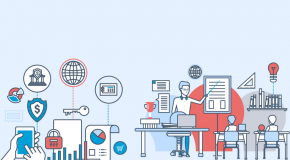There is strong agreement that diversity and inclusion (D&I) is good for business: CEB research finds that in a diverse workforce where the perspectives of diverse and non-diverse employees are valued, employee performance improves by 12 percent and intent to stay by 20 percent. In fact, focusing on diversity alone is insufficient, as it only generates about a 6.5 percent bump in these workforce outcomes.
However, in spite of multi-year investments, organisations haven’t made as much progress with D&I as they’d like, especially in the leadership ranks. Questions about who’s accountable for diversity, how to source diverse talent, and how to manage diversity have stunted efforts. And, adding to the challenge, there are no single solutions – for most companies, achieving D&I requires ongoing effort and focus.
But there can be no question that some companies have made more progress than others. Those companies have oriented themselves around seven key imperatives:
One: establishing a global framework for diversity while enabling regional ownership. The best organisations determine a global framework for D&I but guide regional leaders in setting aligned but locally relevant objectives. International security solutions group G4S operates eight specific global HR processes critical to D&I, but relies on local teams to self-assess their progress in each. Both employee engagement and diversity are up at G4S thanks to this collaborative dialogue.
Two: rewarding interim progress, not just final outcomes. Take BAE: the aerospace and defense company requires each business leader to set interim goals for D&I year by year, and review progress in monthly calls with the head of D&I. A percentage of the leader’s year-end bonus is tied to goal achievement.
Three: expanding the pool of diverse talent through the sources candidates trust most. Many diversity recruitment efforts are focused on impersonal channels – job boards, print media, and social network sites. The best organizations turn to more personal sources of career leads – teachers and career counselors especially can help draw diverse individuals into the talent pool.
Four: hiring for inclusive behaviors. Sodexo, a food and facilities manager, is one company that uses a competency-based interview guide that includes several questions related to “championing diversity and inclusion” and “respecting diverse opinions.”
Five: reinforcing D&I across the employee life cycle. Don’t let D&I begin and end with a one-off course held once a year: supplement initial training with periodic reinforcement of the right inclusive behaviors. The HR staff at Australian telecom, Telstra, provides managers with guidance for talking about inclusion at onboarding, during performance reviews and in team meetings.
Six: aligning the goals of diverse high-performing employees to leadership opportunities. Diverse talent doesn’t necessarily lack the ability to move up; they just may not perceive the proposition as attainable or desirable enough. Medical device manufacturer, Cochlear, however, has helped rising women leaders structure their approach to achieving a leadership position. They hold a workshop in which women create personal mission statements that map to their career goals and the company’s needs, and build their professional networks to increase their insight into leadership roles.
Seven: neutralizing biases in talent management decisions. Bias, whether conscious or unconscious, affects talent management decisions—it’s inescapable. We can bring in inclusive managers, build and reinforce inclusive behaviors, but that’s not enough. We must modify talent management processes to neutralize biases. Companies like Duke Energy and CEMEX have developed hiring tools that match employee and position profiles – an objective-fit analysis helps ensure that all qualified candidates are being considered in hiring decisions, even those not known to the hiring manager.
Finally, good news: employees already recognise your commitment to D&I – in fact, our research shows that 49 percent to 74 percent of employees are aware that their companies are working to build an inclusive workforce – but most are still dissatisfied with the impact of these efforts. Follow the seven imperatives above to go beyond commitment and drive both action and real results from your D&I approach. Your organisation will be the better for it.
You can find out more about our D&I learnings here.
The views and opinions expressed in this article are those of the authors and do not necessarily reflect the views of The Economist Intelligence Unit Limited (EIU) or any other member of The Economist Group. The Economist Group (including the EIU) cannot accept any responsibility or liability for reliance by any person on this article or any of the information, opinions or conclusions set out in the article.





